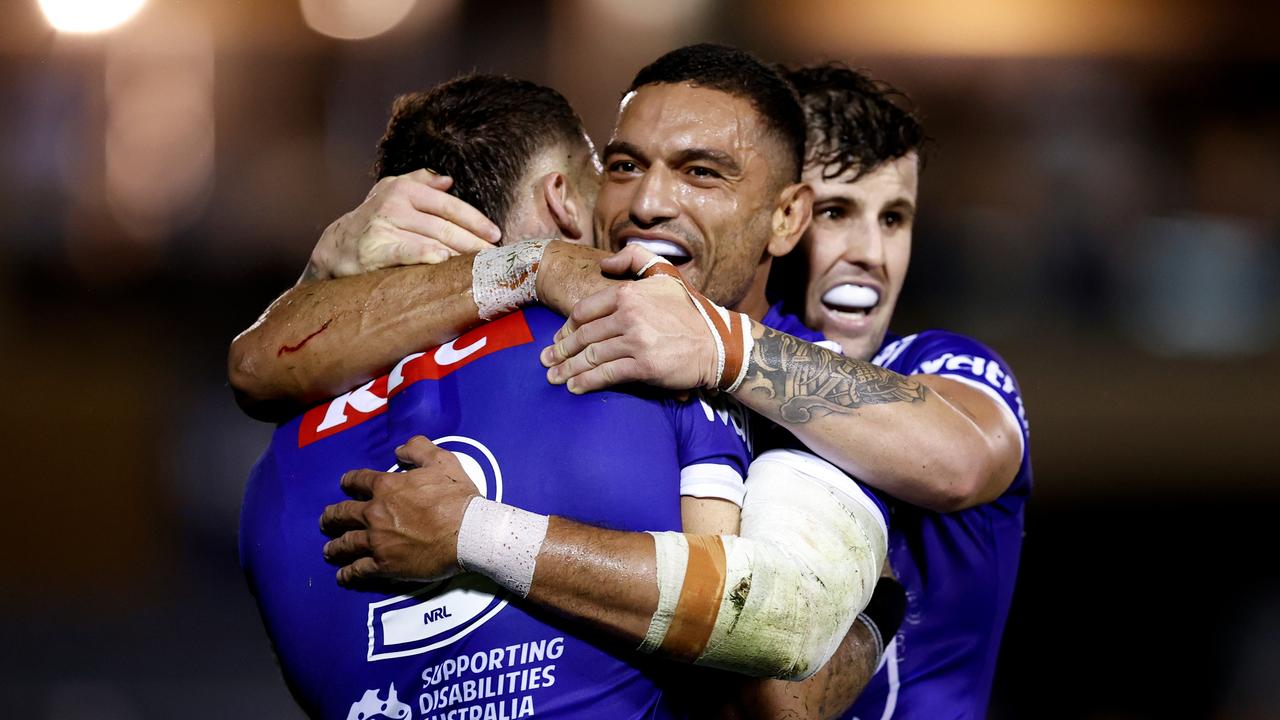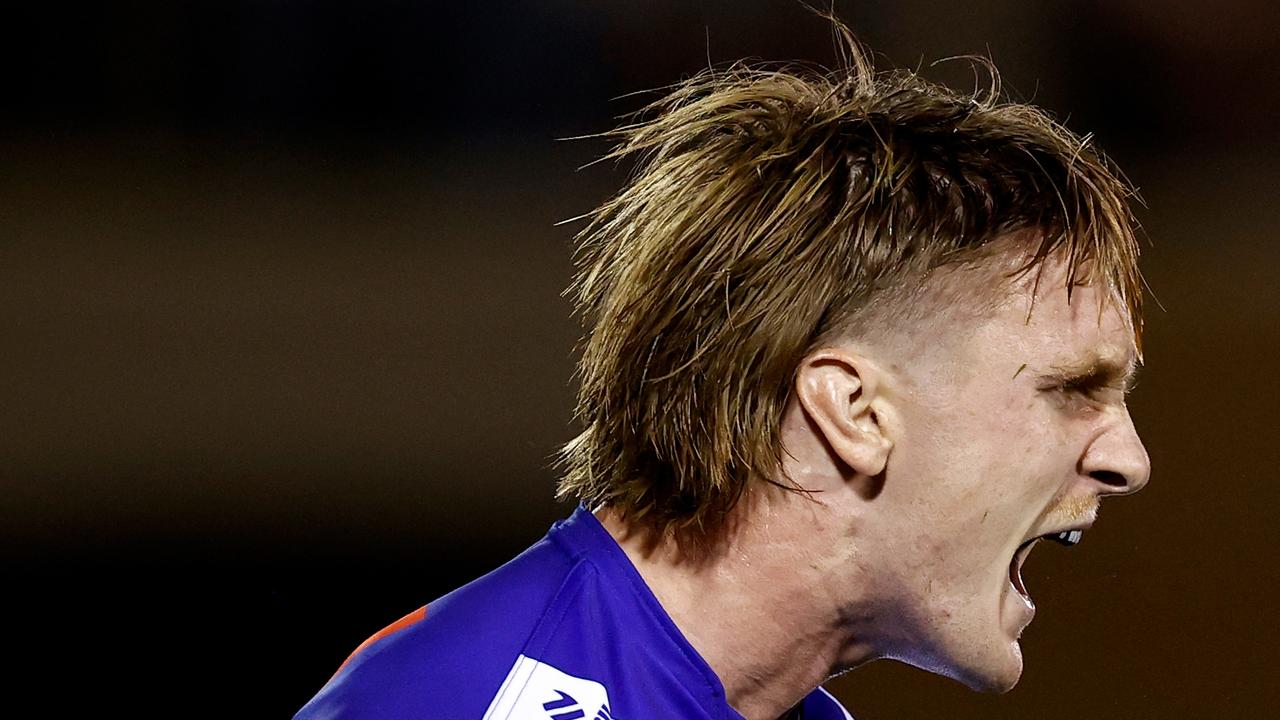Halfback High: Palm Beach Currumbin SHS churning out NRL’s next top playmakers
Welcome to Halfback High – the Queensland rugby league institution churning out players at the game’s most valuable position at a rate unlike any in the country.
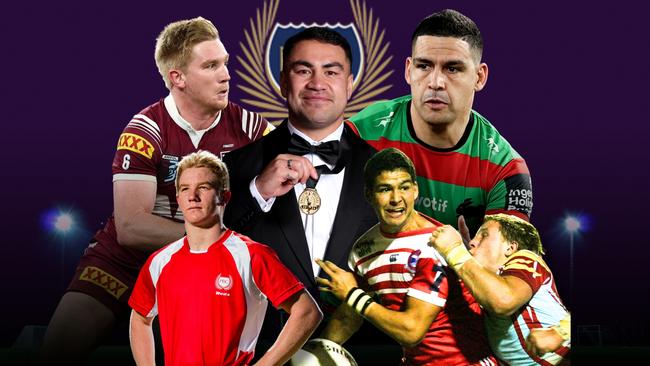
NRL
Don't miss out on the headlines from NRL. Followed categories will be added to My News.
Welcome to Halfback High – the Queensland rugby league institution churning out players at the game’s most valuable position at a rate unlike any in the country.
Palm Beach Currumbin State High School, 15 minutes north of the New South Wales border, is Australia’s reigning national schoolboy champion.
Since 1992 the school has produced 55 first graders with nearly a third of those NRL graduates playing primarily as a halfback or five-eighth.
This season alone Palm Beach has seven former halves on full-time NRL contracts, with another three fighting for their shot in future seasons via trial matches.
It is a dazzling honour roll at a position where greatness is so rare that clubs can wait a generation to unearth their next premiership-winning talent.
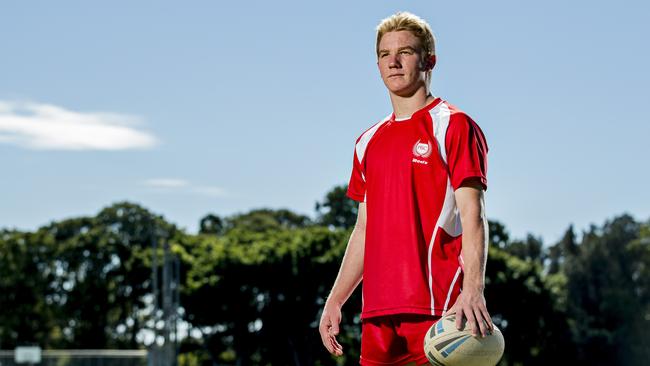
Cody Walker (Class of 2008), Jahrome Hughes (2011) and Tom Dearden (2018) are among the game’s brightest stars.
Toby Sexton (Class of 2019) and Jamal Fogarty (2011) are established first graders while Titans pair Tom Weaver (2021) and Zane Harrison (2024) are some of rugby league’s most coveted young shotcallers.
Ryan Rivett (2020) and Josh Lynn (2022) pulled on Cowboys and Eels jerseys respectively in trials on Friday night while Bailey McConnell (2023), the son of 1998 Palm Beach playmaker and North Queensland halfback Brent, made his Broncos debut against Burleigh last week.
Most schools would count their blessings to have 10 former students represented across the entire league.
At Halfback High, that is only the beginning.
INSIDE THE HALFBACK LABORATORY
There’s something in the water at Palm Beach Currumbin beyond the surfboards.
Over 30 years the school has refined the art of developing halfbacks from an art into a precision science.
Since 2017 PBC has launched seven playmakers into NRL pre-seasons within weeks of graduation.
Tim Maccan, PBC’s Class of 2000 halfback who went on to coach the school to its fourth national title last year, says the task of developing the NRL’s most valuable commodity begins from the first day of Year 7.
“It’s about identifying those key playmakers and giving them a simple, basic role in a structure that works at a high school level,” Maccan explained.
“It’s about identifying those traits early. To me, that’s their body position when they catch and carry the ball; how they use their voice and direct the team; their kicking and what they look at in defensive lines.
“At a basic Year 7 level there are a few young ones who tick those boxes. It’s then about building that game awareness in them.”
Palm Beach is the southernmost of three designated rugby league schools of excellence serving a booming Gold Coast and Northern Rivers population of about 1.2 million.
Players from across the region trial for a place in the school’s rugby league academy from Grade 7, where students are taught rugby league as a specialist subject during school hours.
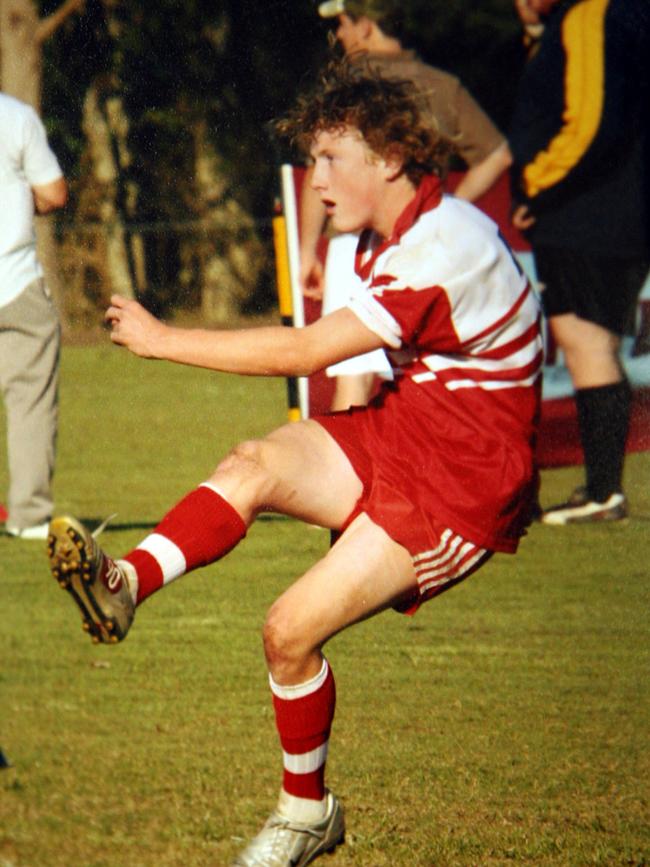
Those theory sessions are complemented by field and gym sessions, escalating to the point that by their senior year Palm Beach Currumbin players are training five days a week in addition to club, school and representative football commitments.
Halves in particular have benefited from a coaching staff with experience at the position.
“We’ve got some really good coaches who have played NRL or at a high level, and we like them to sprinkle their magic from Grade 7,” Maccan said.
“Rod Patison was here as our founding coach and spent over 30 years in our program. He selected some up-and-coming young coaches at the end of their careers, or still playing, who could do the job. Myself, Brad Davis (now Titans assistant coach), Steve Murphy (now Sea Eagles assistant coach). Aaron Zimmerle at Tweed Seagulls; Sam Meskill and Will Johnstone, who are still playing local footy and played Queensland Cup for a number of years.
“That reflects the quality of coaching the kids are going to get. It plays a big role. By Grade 12 they all hopefully have a piece of that magic and can develop into the best player and best person they can be.”
THE PLAYER’S PERSPECTIVE
Jordan Rankin remembers an eventful Year 11 season at Palm Beach Currumbin.
He played halfback in a 2008 team containing future NRL stars Ryan James and Cody Walker, won PBC’s second national title, and represented the Australian Schoolboys, outgrowing the Titans under-17s to star on the under-20s stage by mid-season.
And in August, more than 100 days shy of his 17th birthday, he made his Titans debut, becoming the youngest first grader since Wests’ Jack Arnold in 1936.
What was his secret?
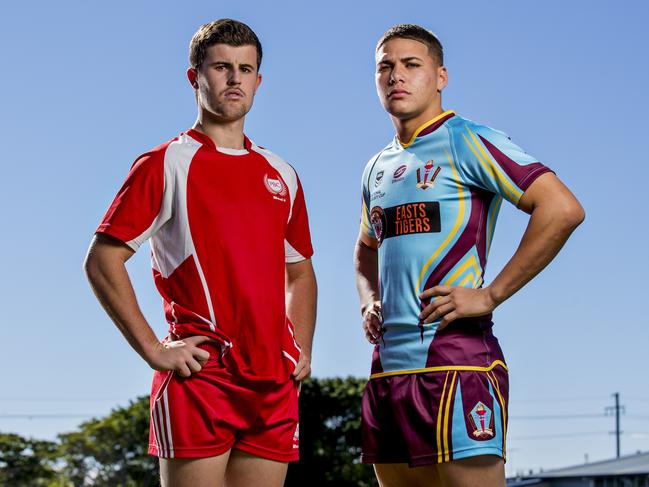
“From Year 8 to Year 12, rugby league was a subject,” Rankin said.
“At the earliest stages you did it 2-3 times a week. By Year 12 it’s five days: before school, during school as a subject, and playing through the week. You’re getting a lot of exposure to footy training at a high level, with high level coaches.
“Rod Patison (PBC’s 2008 coach) was a key to me being able to do what I did and keep grounded. Steve Murphy had just left PBC to be an assistant at the Titans, so I had him as an ex-teacher and my coach. Having those guys, and my family, gave me a good grounding. Having really good coaches helped me progress to a high standard and I can only imagine the standard now, as to when I was there.
“The school wasn’t short of first grade reps at the time either. Ben Ikin, Ben Hannant, Darius Boyd, there were plenty of guys before me who had done similar just after school. What I did was, at the time, unheard of and unprecedented but people before me at the school had paved the way.”

Now Parramatta’ SG Ball under-21s coach, Rankin said living and breathing rugby league during his school years had accelerated his development as a player – and bet the same was true for PBC’s current golden generation of halves.
“To have those players (currently active) it’s quite a big feat for the school. The program they’ve been able to run to show the talented kids that there is a pathway to reach – and not just the halves either, with guys like Keano Kini at the Titans,” Rankin said.
“It shouldn’t go unnoticed that the kids have done a lot of work themselves to get NRL interest. It’s quite a tribute to the way they’ve trained, their work ethic and skill, to get them there as well.
“The school holds a special place in my heart and I’m very still very connected with a few of the coaches. I regularly travel up to check out the program and see where they’re at. When PBC play I listen in or watch the games because I know there will be talented kids who work hard and are never given anything.”
THE INTANGIBLES
PBC’s program takes in players with instinct and crafts a football brain to complement it but McCann and Rankin agree there is one essential the school will never be able to teach.
Competitive spirit.
Players who don’t have it are quickly found out and make way for those who do when it comes to crunch time at the selection table.
“I think everyone is coachable, but it’s also about how much extra work they’re willing to do,” Maccan said.
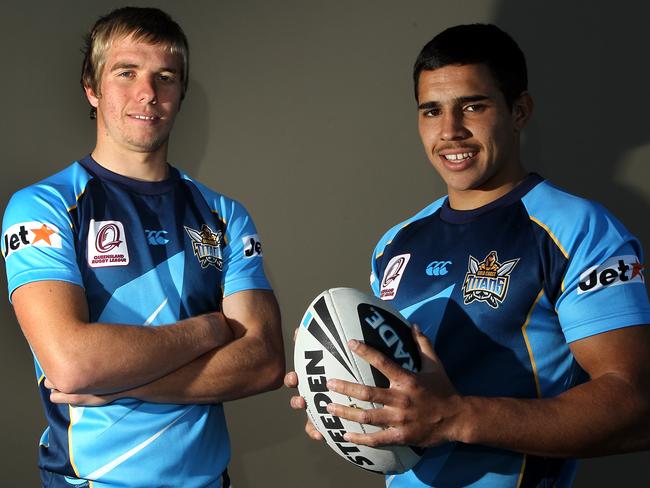
“I can guarantee the halfbacks playing this week (at NRL level) were here first and left the last.
“For the last three years I’ve had Zane Harrison, and in my time as head coach, I haven’t seen someone work so hard on making sure their game is 100 per cent ready and accurate for game day, or encourage others to do it. Zane almost made it compulsory for others, to assist the team. That makes them better.
“Thinking back to Tom Weaver’s time when I coached them, I’ve never met anyone who hates losing like Tom Weaver. He was really good in finding ways to win games.
“That’s something that those types of players, even if they don’t naturally have it at the beginning, over time building those skills, they will develop that attitude. They need to keep doing extras and sharpening their skills.”
THE WORLD IS WATCHING
Palm Beach Currumbin’s reputation has grown to the point that players have moved interstate and internationally to attend.
Kiwi products Keano Kini, Xavier Willison and Deine Mariner are among those, but Maccan rejected that the school’s portfolio of stars had been artificially sweetened by NRL clubs parachuting in their contracted players.
“We have a trial process for all students, contracted or not,” Maccan said.
“We make sure they go through the same process as any other kid. If they can’t get over to their trial we look at their footage and compare that, but we don’t give special treatment to anyone.
“NRL clubs may sign a player because they believe they have talent but we have to make sure they will fit in as well.
“Of the kids we get in, the only halves in the past eight years have been Tom Dearden and Tom Weaver, who came in from Year 11. All our other halves have been with us since Year 7, so there’s no ‘parachuting’ kids in.”
Nash Dawson, a past student at PBC and now one of rugby league’s top player managers, said although NRL clubs would not sign a half on the school’s reputation alone, PBC’s presence on a resume was a green flag for recruiters.
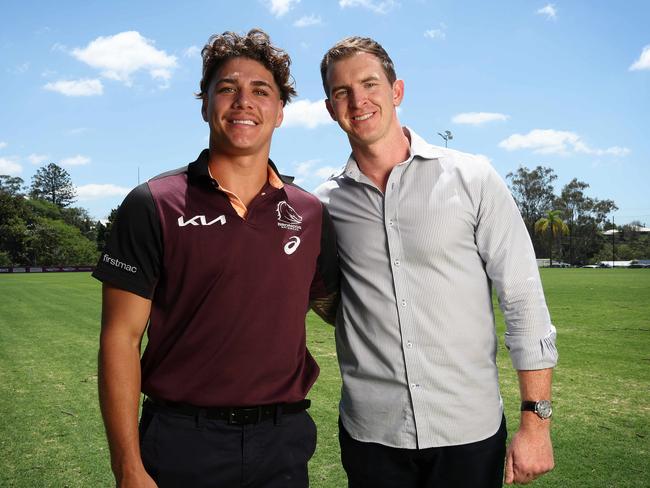
“With the transition from high school to the NRL being a very big jump, the fact the high school has a strong system that holds high standards – and a young player is able to thrive there – provides NRL clubs with more confidence that the player can transition in their environment smoothly,” Dawson said.
“There’s a lot that goes into making an NRL player and it’s not just what you see on the field. PBC really drive home that you’re more than just a footy player, emphasising that you have to be a good human first.
“I believe a big reason for its high success rate, especially in the halves, comes down to the quality of the environment.
“When you combine good coaching, good standards and constant healthy competition amongst a pool of quality players, it naturally elevates a young player’s game to high levels, without question.
“Because they are all surrounded by each other they have each other to thank. They’ve reached really good heights because they had competitive circumstances and I think PBC creates that,” said Dawson.
In an era where halfbacks are worth their weight in gold, Palm Beach Currumbin has cracked the code.
Decades of elite coaching, relentless competition, and a hunger to win have assembled a program that shows no sign of slowing down.
For NRL clubs searching for their next shotcaller, one thing is certain – the best bet is still Halfback High.
More Coverage
Originally published as Halfback High: Palm Beach Currumbin SHS churning out NRL’s next top playmakers




